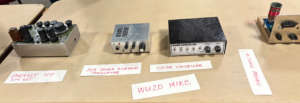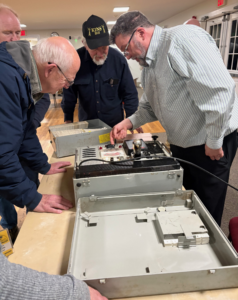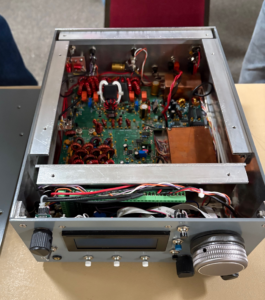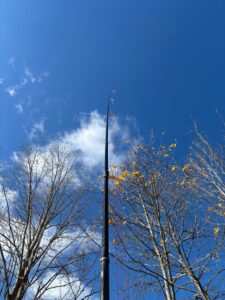The Nashoba Valley Amateur Radio Club held its annual Homebrew / Show & Tell Night on December 18th with numerous members displaying their different projects. It was interesting to see what everybody was working on and here are three projects that really caught my eye.

Mike WU2D & Mark WA1QHQ displayed a number of different projects they had designed and built including a Noise canceller & a Paraset spy radio. Mike explained his replica of a WWII Paraset spy radio and how it was used. Originally built by the British it was used for clandestine radio communications in France. The word Paraset is a combination of “radioset” & “parachute”. Paraset radios were dropped by parachute behind enemy lines. Mike & Mark have agreed to come back on March 19th, 2026, to provide a more detailed presentation on spy radios, their history and how they work.

Phil W1PJE, brought in an old Western Electric automated tube tester from the 1960s. While tube testers aren’t that unusual, automated ones from that time are. Phil explained how punch cards were inserted into the instrument to configure the specific electrical parameters for each tube. The automated tube tester was built into a rugged metal suitcase so it could presumably be tossed in the back of a truck. Phil also displayed the companion library of old punch cards housed in a smaller rugged metal suitcase.

Tom W1PKX brought in his PKX40 transceiver that he designed and built. Tom explained many of the features of this high performance 40w transceiver and some of his recent improvements. I was blown away by some of the CW performance specifications of this transceiver and how they were similar to some top commercial radios. For more information on this project and others that Tom has made you can look him up on QRZ.com.
Les, N1SV


